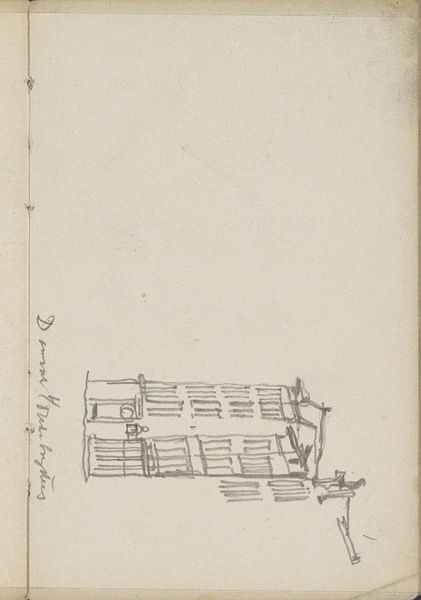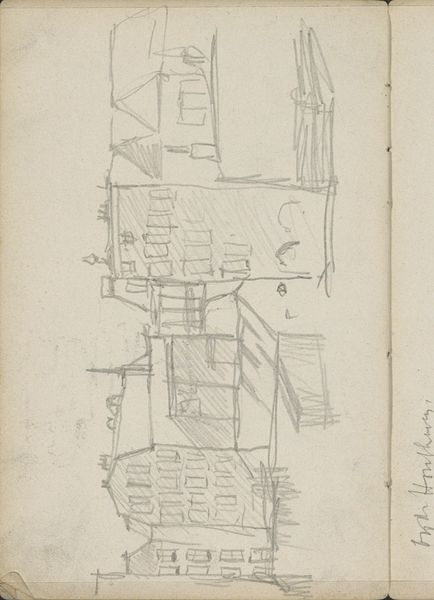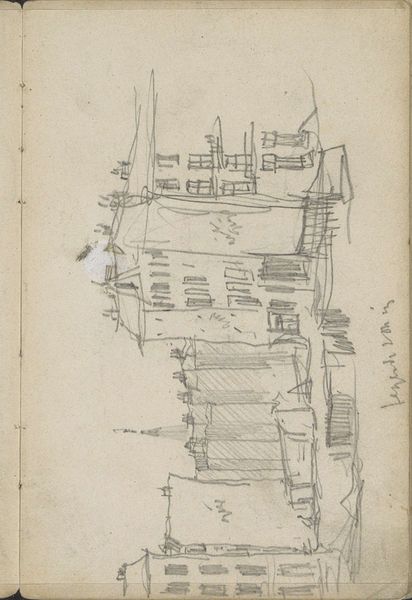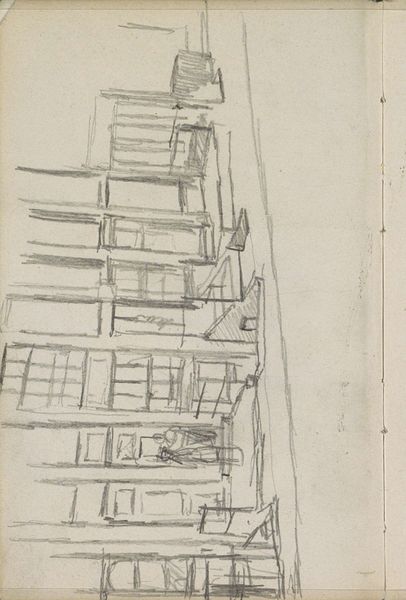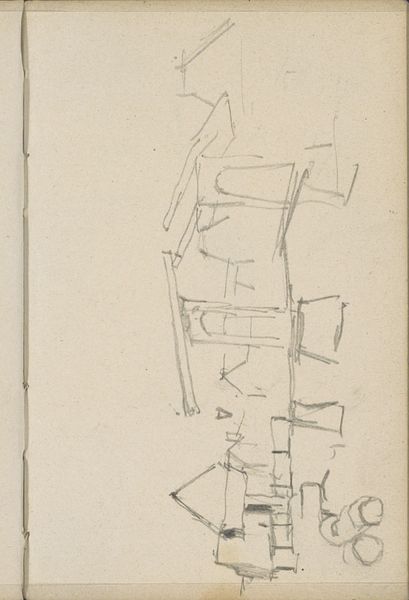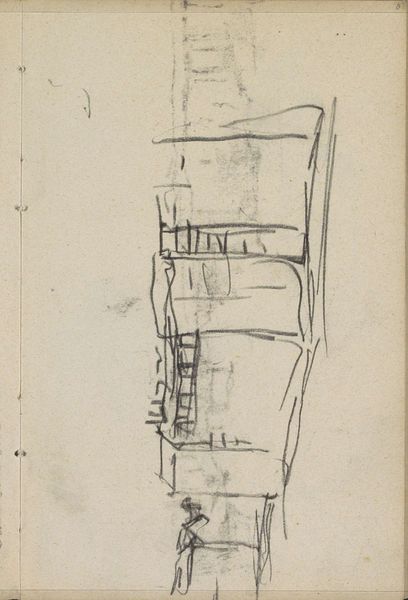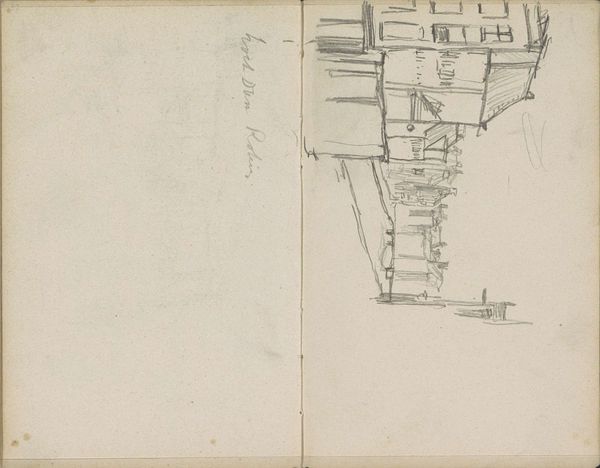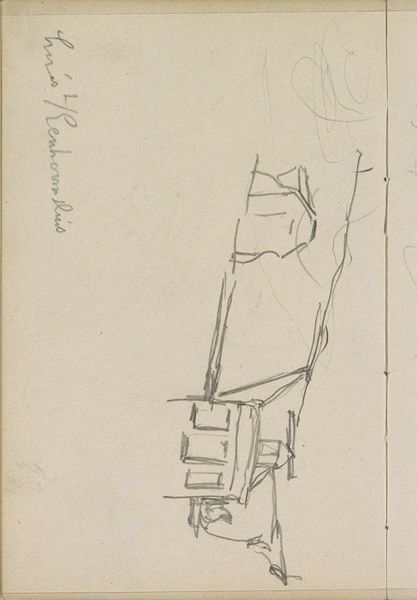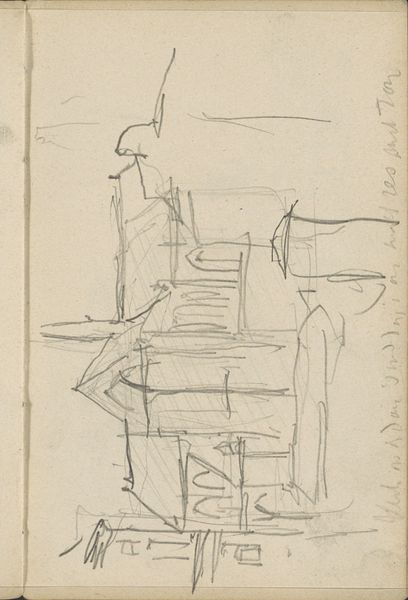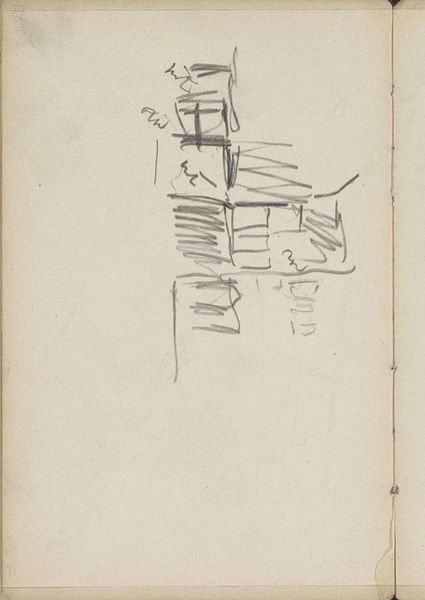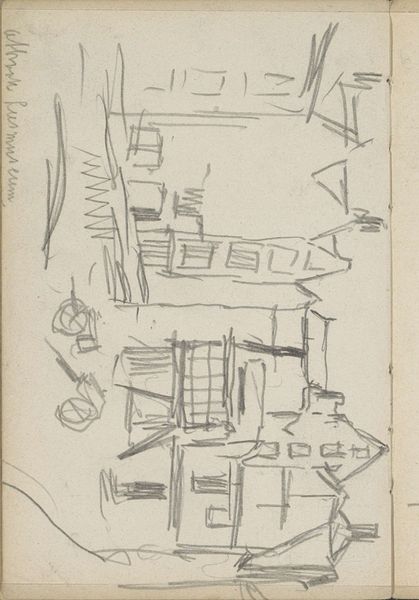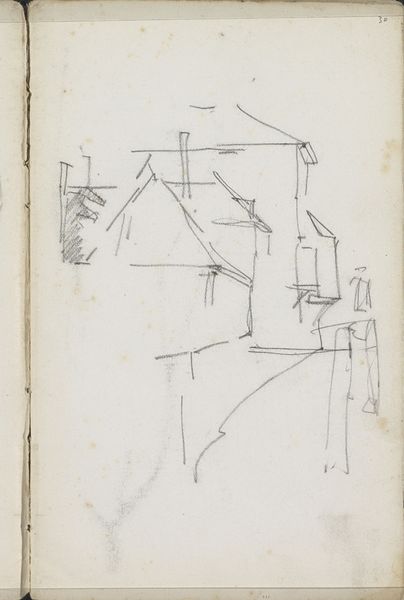
Copyright: Rijks Museum: Open Domain
Curator: Here we have George Hendrik Breitner's "Huizen aan het Singel in Amsterdam," a drawing dating back to around 1902, currently held at the Rijksmuseum. Editor: It feels like a ghostly blueprint, like a forgotten urban plan sketched in the faintest graphite on worn paper. So raw and yet…organized? Curator: Breitner was certainly known for his cityscapes, and this drawing offers a glimpse into his working method. Note how he used pencil on paper, likely capturing a quick impression of the scene before him. Editor: Yes, I'm immediately drawn to the choice of material. Breitner, in choosing such a modest medium, emphasizes the immediate, lived reality. What statement did he wish to make in his social commentary with such sparse means? It makes the everyday labor more accessible, like he wasn't attempting to hide the construction. Curator: Perhaps he wasn’t interested in grand statements at all, but rather the quiet observation of everyday life in Amsterdam. The rapid strokes suggest transience and constant change. Look at the way he suggests the rhythm of the street and buildings with such economy. I feel his energy there with the subject itself. Editor: Right, but the swiftness of execution doesn't negate the impact of its making. The choice of drawing is relevant, positioning this more deliberately towards those very ideas of labor, access, and materiality in the means. How he worked has meaning for how we receive this record. Curator: True. Thinking about how the artist experienced that particular day along the Singel is fascinating. How the light touched the buildings, what sounds filled the air… This drawing manages to encapsulate something of that fleeting sensory experience. Editor: For me, reflecting on the material elements of that captured "day" through Breitner's choices gives "place" a tactile meaning that transcends the merely visual. The impression lies also in what informs the piece as object. Curator: Exactly, it’s both a record of a place and a record of an interaction. It is there on display for us to appreciate his way of interpreting, thinking, feeling it out to make it accessible. Editor: And as someone rooted in the context, this little pencil drawing serves as a great reminder to see the weight, or the lack thereof, as part of experiencing the streets depicted within it.
Comments
No comments
Be the first to comment and join the conversation on the ultimate creative platform.
